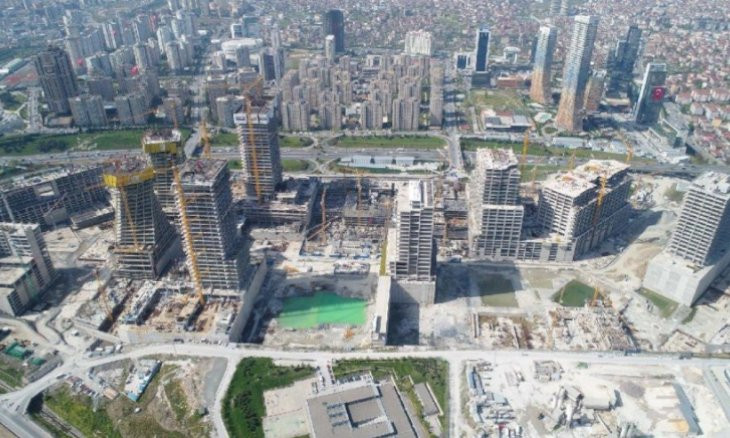Turkey’s government tender scheme
The system of government tenders in Turkey often looks sound on paper. When the company with the lowest bid wins the tender, we accept that there were no issues. However, the secret lies in the tricky ways the tender items appear to be calculated. Amongst the thousands of government tenders, it is almost impossible to track down the irregularities, unless one looks at the details.
There is an old saying attributed to Anatolian people who had difficulties supplying soldiers and paying taxes to the Ottoman Palace: “The tricks and games never end with the Ottomans.” These days, we can say the same of the state tender schemes seen from the ruling Justice and Development Party (AKP). The part of this that is most often publicly debated is that the same companies are typically invited to participate in tenders, while others are left out in the cold. However, there are so many intricate tricks amongst the thousands of government tenders, it is nearly impossible to track down the irregularities, unless one looks at the details.
One detail that is often looked at regarding government tenders, is whether the company with the lowest bid is given the job. If there is a clear competitor, should it still be assumed that everything happened legally?
The Üsküdar Municipality, a large district run by the AKP in Istanbul, held 133 tenders in 2019, 72 of which were conducted via a method detailed in an article of the law meant to be used only under extraordinary circumstances such as war, earthquake, and epidemic. We will walk through Turkey's Court of Cassation (Sayıştay) report, but first, let us look at some of the more technical details.
A tender usually consists of a number of different items. The institution conducting the tender makes a list of approximate amounts of unit costs of the different items, calculating the unit costs according to market prices. Bidding companies then offer their bids for each item. Once all the bids are collected, the price of the tender is established and publicized. When the company with the lowest bid wins the tender, it is accepted that there were no issues.
However, the secret lies in the ways the tricky ways the items appear to be calculated. Here’s how it is done: The Civil Works Department of the Üsküdar Municipality put out a tender for “construction of lining/bracing in various places.” There were 29 different items within the tender. The first step is to determine the estimated costs, but there is a huge difference between estimated costs in the contract and the actual production costs of the company that wins the tender.
The first item of the contract had 3,850 units. The company used 7,366 units. Leaving a difference of 3,516 units. Among the 29 total items, four of them saw an excessive surplus on the side of the company. For 10 of the items, there are less actual units than was is specified in the contract. What is noteworthy is that there is a bid of “zero” for 15 items. Seems weird, doesn’t it? Let me clarify: For example, while the cement grouting is 50 cubic meters in the contract, the company later stated 196.79 cubic meters. What kind of work is this that the contractor will complete the job without using 15 items at all?
If we proceed to step two, then the situation becomes a bit clearer. Let’s make a comparison between the approximate cost of the contract and the company’s offer.
The reason why the company made offers on only four items that were above the estimation, is that the prices offered were many times higher than the estimated cost from the municipality. For example, in the first item, the estimated cost in the contract is 103.6 Turkish liras. The company offered 450 liras. For another item, the company offered 6,500 liras for a 122-estimated lira item; 4,000 liras for a 33 lira item; 3,504 liras for a 4.75 lira item; and 3,548 liras for a 4.5 lira item. For the remaining 80 percent of the job, the company offered prices so far below the cost set by the municipality, you would think they were doing charity work!
So, why are they going through all this trouble?
After the tender is evaluated item by item, the most suitable offer is selected. Subsequently, they can easily say, “We have met the legal competitive conditions and have conducted this tender accordingly.” But when it comes to paying for the jobs, what happens is different. In this example, for only the four items the company offered above, the estimated cost is 5,872,000 liras. So, the total cost of the tender is 6,340,000 liras. In short, the company gained more than 95 percent of the tender through tricks in the pricing of items.
In the manufacturing of 29 different items, 15 items were manufactured at a rate of 0 percent, 5 items at 5 percent, and 5 items between 19 and 58 percent. The manufacturing rate of the four items that had the most extreme price discrepancies varies between 137 and 393 percent.
This method has been used in thousands of tenders for years. Do not assume that these tricks only happen for small-scale tenders. If we look at a highway tender which was completed in 2017 we will find it noteworthy in this regard.
A company which bid 519 million liras, later presented 9.2 times the cost estimated by the government for the highway excavation project and 22.63 times more for filling jobs. However, the bids for more expensive jobs that required more technology and engineering were shockingly low: one twelfth for culvert constructions, one fifteenth for underpasses, one eighth for bridges and viaducts, one sixteenth for tunnels, one forty-fifth for superstructures, and one twenty-sixth for signalization. As a result, according to state calculations, while the cost of excavating and filling was 84 million liras, with the company’s offer, the cost of the same jobs increased to 517.6 million liras. The company which did the excavation jobs completed 94 percent of the project and contract-wise looked like a successful firm.
According to the Court of Cassation, which oversees the Ministry of Transportation, this was not the case at all. Although, on paper, it looked like 94 percent of the job was finished; in real life, 33 percent of the job was finished. The breakdown of the job is as follows: Route jobs were 101 percent complete, culverts 53 percent complete, tunnels 16 percent complete, and electrification and signalization 0 percent complete.
Even though 2.5 times more than the allocated money was spent on road projects before 2017, only 1 percent of culverts and underpasses, 10 percent of tunnels, and 1 percent of superstructure constructions were completed. That is why, when they mention construction or mega projects, the first thing that comes to their minds is excavation.
I started with the saying “the tricks and games never end.” Well, there is a new method to complete unfinished work called “completion tenders.” Whenever you hear this term, know that another job has been left unfinished by constructors who were paid in full. Moreover, most of the time, the completion tender is given to the same company. It continues like a pyramid scheme, or rather, Turkey’s tender scheme.


 All the president’s oligarchsWorld
All the president’s oligarchsWorld Istanbul Finance Center building project awarded to pro-gov't firm in closed-doors arrangementDomestic
Istanbul Finance Center building project awarded to pro-gov't firm in closed-doors arrangementDomestic